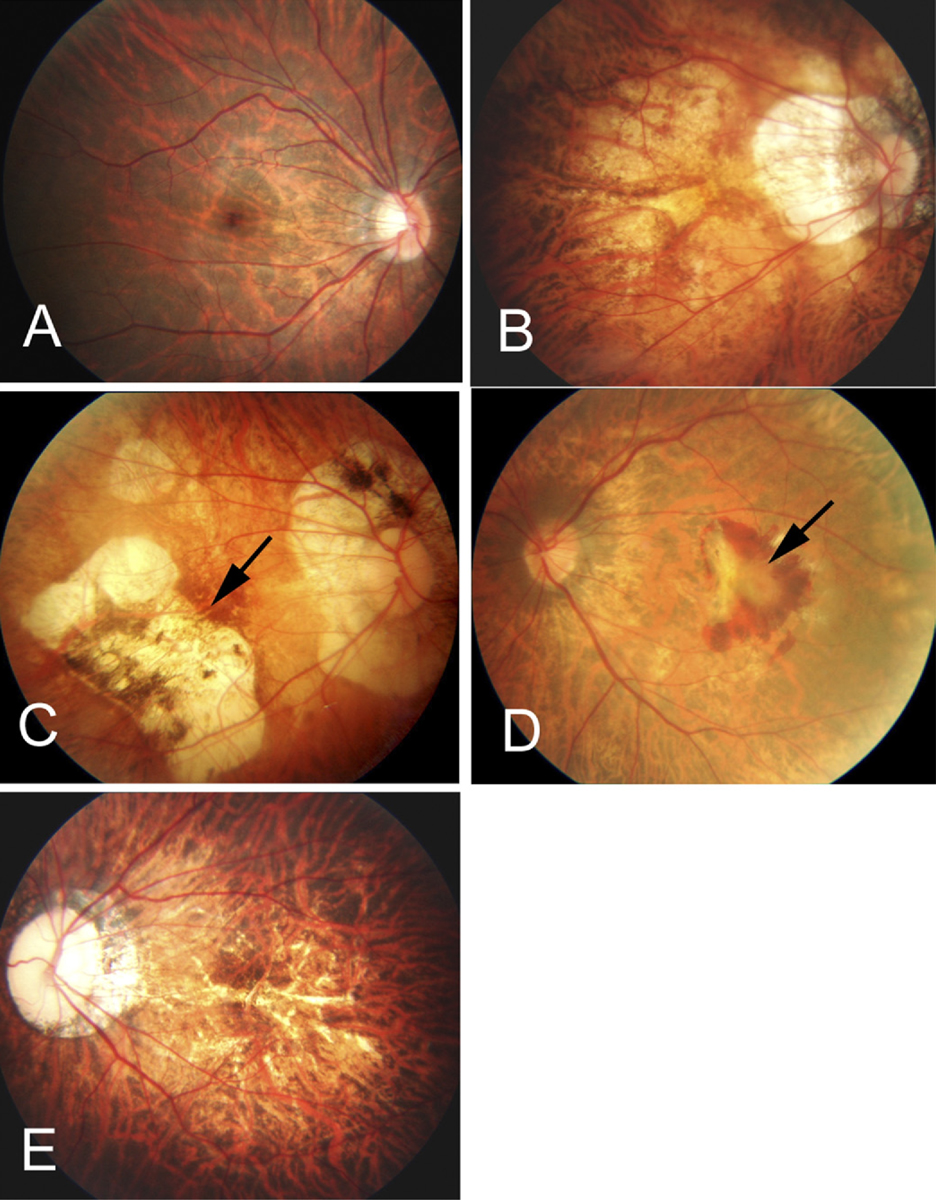 |
|
A macular hemorrhage and fibrovascular membrane (arrow) in a 67-year-old, 10.50D myopic woman. Photo: Julie Poteet, OD. Click image to enlarge. |
Sixty percent of macular neovascularization (MNV) cases in patients younger than 50 are caused by myopia. Myopic MNV is a sight-threatening complication if left untreated. Today, many clinicians treat these patients with intravitreal anti-VEGF injections; however, studies have shown that vision improvements are not usually sustained with this therapy. A recent study investigated the risk factors of vision loss and multiple recurrences, as well as those associated with visual improvement in patients with myopic MNV undergoing anti-VEGF therapy.
The retrospective study included 310 eyes with myopic MNV and a median follow-up of 3.5 years. Vision gain was defined as the maximum best-corrected visual acuity (BCVA) value reached during treatment, and peak vision loss was defined as when the highest BCVA value was never attained again over follow-up.
The data showed that eyes with a worse BCVA at baseline had a better chance of achieving peak vision (hazard ratio (HR): 2.59). For 162 eyes (52%), peak vision was lost during the treatment period. Risk factors for non-sustained peak vision included older age (HR: 1.22) and recurrences (HR: 1.10). Factors that predicted multiple recurrences included older age (HR: 1.13 for 10-year increase), larger myopic MNV (HR: 1.06 for 1mm2 increase) and juxtafoveal location (HR: 1.88 vs. extrafoveal).
“The chance of achieving peak vision increased as a function of the baseline BCVA,” the researchers noted in their paper published in Retina. “Two-thirds of the eyes improved their vision and reached their peak vision after two years from the initiation of treatment.” However, they reported that there was “a steady visual decline starting from the third year of follow-up, which paralleled progression in myopic maculopathy severity stage and choroidal thinning.”
More than half of the patients (169 eyes, 54%) had at least one myopic MNV occurrence. The researchers noted that there were 429 total recurrences in the cohort, with a median of two events per eye. They added, “The cumulative number of events was 0.30 by the first year, 1.0 by the third year, 1.75 by the fifth year and 3.3 by the 10th year.”
The researchers concluded that multiple recurrences and older age were found to be the two primary risk factors for peak vision loss in patients on anti-VEGF treatment for myopic MNV. “Patients at risk for recurrences should undergo more attentive monitoring to avoid vision loss,” they advised.
Cicinelli MV, de Felice E, La Franca L, et al. Risk factors of vision loss and multiple recurrences in myopic macular neovascularization. Retina. November 4, 2022. [Epub ahead of print]. |


